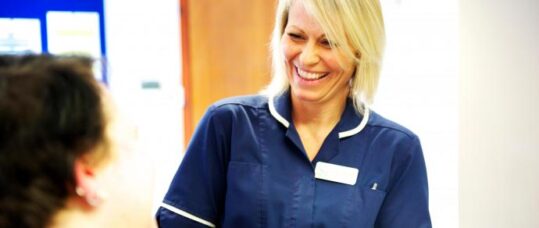The five biggest primary and community nursing stories of 2019

We look back at the top stories of the year in primary and community care nursing.
The past year has been transformative in primary and community care nursing. From the publication of the NHS Long Term Plan to the landslide election of a renewed Conservative party, we have repeatedly seen recurring themes of workforce, funding and education put under a new light.
The NHS Long Term Plan puts primary care front and centre
The year kicked off to a breathless start with the publication of the eagerly awaited NHS Long Term Plan. It put primary care at the forefront with an additional £4.5 billion investment – but details on workforce, crucial to its success, were to be released later in the year in the full plan.
Related Article: One in five appointments in general practice completed by a nurse
An interim workforce plan emerged in June with a flagship ambition for an additional 5,000 clinical placements to boost student nurse numbers. However, with time ticking until 2020, it doesn’t look like we’ll hear any details on funding this side of New Year. Concerns that staffing shortages threaten the delivery of an ambitious Long Term Plan continue to niggle away.
The new GP contract brings concrete change
The end of January saw the announcement of the new GP contract. The biggest change to GP services since 2004 committed to delivering more practice nurses including newly qualified trainees, alongside a wider expansion of the primary care workforce. A new state-backed indemnity scheme went some way to easing anxieties among GPNs too.
Primary care was primed to welcome five new roles: pharmacists, social prescribing link workers, physician associates, physiotherapists and community paramedics. In particular, the rise of social prescribing could bring exciting opportunities for nurses, as Nursing in Practice explains in its analysis on whether nurses might even be the missing link to unlocking the area’s full potential.
Nurse take the lead in emerging primary care networks
The formation of primary care networks (PCN) in July saw 19 nurses take on clinical director roles – putting themselves at the forefront of a rapidly changing primary care landscape, closing the gap between general practice and other players in the system.
At the time, Andrea Mann, clinical director of Crossgates PCN, told Nursing in Practice that more nurses should consider putting themselves forward. There are plenty of other ways to get involved in PCNs too, as Robana Hussain-Mills lays out in her latest PCN blog.
Related Article: Nurses joining NMC register later than before
Lincolnshire health visitors strike – and win
Health visitors in Lincolnshire called off ongoing strike action in December with trade union Unite claiming a ‘pay victory’. The dispute began in July over a controversial ‘career progression scheme’, which Unite said put health visitors on an unfair pay grade.
Against a backdrop of a 31% drop in health visitor numbers in England since 2015, Unite regional secretary for the East Midlands Paresh Patel had a bittersweet reaction to the resolution, saying ‘the fight will continue across the country in 2020’.
Boris Johnson says he will prioritise NHS after landslide election victory
A stronger Conservative party will enter the new year with big plans for health and social care including a pledge for 50,000 more nurses, a pledge that faced ridicule after it emerged that the figure includes 18,500 existing and returning staff.
Related Article: Nurse pay over £8k lower due to decade of pay cuts, RCN suggests
Other eye-catching promises include increasing investment in the NHS to £34 billion a year above the 2018/19 level by 2023/24 – equating to a £20.5 billion extra in real terms – alongside a new £5000 to £8000 grant for student nurses. These numbers might sound big but they not big enough, says the Health Foundation. Its analysis found that Tory funding pledges are below the amount needed to maintain current standards of care.
Meanwhile, Queen’s Nursing Institute chief executive Crystal Oldman told Nursing in Practice that we ‘need to see the reality of [the Conservatives’] intentions turned into action’.

See how our symptom tool can help you make better sense of patient presentations
Click here to search a symptom


We look back at the top stories of the year in primary and community care nursing.



